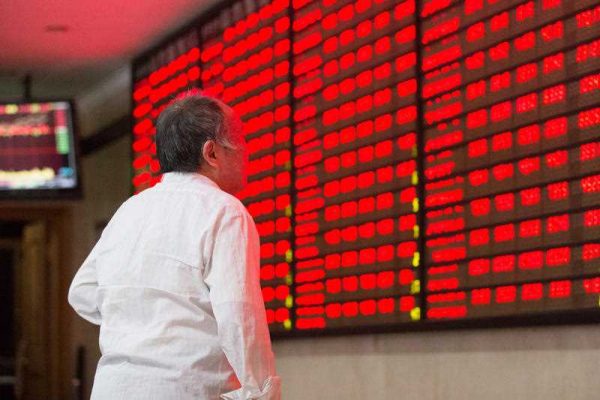In the Asia Pacific, as growth in China slows, policymakers are increasingly asking what this means for their economies. Against this backdrop, the key question now for Asia’s emerging and frontier economies is what can be done to maintain the pace of convergence to higher per capita income.
But rather than focusing exclusively on boosting average growth rates, Asia Pacific economies should also focus on building ‘resilience’ — that is, staying in positive per capita income growth states and minimising negative growth states.
While much attention has focussed on the question of differences in long-term average growth rates, far less time has been spent on resilience. There is generally a positive relationship between the two: countries that have risen up the income ladder have tended to do so in a sustained fashion, bouncing back quickly from the rare growth reversal. This holds in samples of Asian economies.
Yet average growth and resilience are not the same thing. A positive association between average growth and years spent in positive growth isn’t necessarily a given and we shouldn’t automatically expect it to hold over large sample countries. Research also shows that rich countries are differentiated from poor countries not so much by the average growth rates during periods of positive growth, but by how long they experience negative growth and average growth during downturns.
So what makes a country resilient?
The structure of the economy is important. Data on global and a sample of Asian economies split by median resilience shows that the more resilient economies have been those with output shares concentrated more in services and industry than in agriculture, with the largest fraction of their workforce in services. Less resilient economies tend to employ their largest fraction of workers in agriculture, followed by services and then industry. There is a positive association between the share of industrial employment and the fraction of time spent in positive growth.
In terms of proximate factors, both investment in physical capital and the accumulated stock of human capital (proxied by years of schooling) are positively associated with higher resilience. Openness also matters, but more along the dimension of capital flows (FDI and portfolio investment) rather than trade flows.
Financial deepening is important for resilience to the extent that it supports investment in physical capital and supports education spending. But once these channels are accounted for, there is evidence of a negative direct impact on resilience from higher leverage and volatility in the real effective exchange rate.
Fiscal policy prudence (represented by positive average cyclically-adjusted and structural balances) and low debt ratios help raise resilience. Larger fiscal buffers mean governments can provide counter-cyclical support as needed and help maintain positive growth in per capita income for a larger fraction of the time.
Finally, on ‘fundamental factors’ underlying economic performance, our results indicate that improvements in the quality of governance are associated with higher resilience.
So the investment share of GDP, schooling, industrial share of employment, lower volatility, greater openness to FDI and portfolio flows and fiscal prudence are all positively associated with higher resilience. What does all this mean for Asia’s policymakers?
A number of policies could help raise investment where it is relatively low or shift it towards non-tradable goods where it is currently skewed toward export-oriented manufacturing. These include: lowering uncertainty related to the corporate tax code and providing cyclically-appropriate macro policy support; further improvements in the ease of doing business; and raising infrastructure spending. These measures could also help attract the foreign investment flows that are also positively associated with resilience.
Increasing the share of industrial employment means doing the small things right. Reducing search and matching costs through job agencies and credit registries — to increase the efficiency of pairing up vacancies with job-seekers, financiers with projects and manufacturers with distributors — would reduce hold-up costs and incentivise industrial growth.
The obvious macro policy implication to boost human capital is redirecting public expenditure from wasteful areas (such as poorly targeted subsidies) to financing education infrastructure and teacher training. At the same time, attention will also need to be paid to the demand side and take-up, especially for frontier and developing economies.
From a long horizon perspective, reforming economic and political governance institutions to enhance control of corruption and boost government effectiveness will have a first order impact on raising resilience. These transitions from a governance system that favours a narrow elite at the expense of others to a more meritocratic, equal opportunity system take a very long time. But incremental steps can be taken by changing the legal framework to introduce more checks and balances, while reducing barriers to entry into protected sectors.
Escaping traps is ultimately about boosting resilience, sustaining growth and maintaining improvements in living standards over time. As countries have made these transitions in the past, they have faced different challenges at various stages of history and have therefore been offered different policy prescriptions.
One common thread that runs through all of these phases over the years is that more resilient countries have also tended to end up with higher levels of income per capita over the long run. For Asian economies looking to sustain convergence, remaining resilient will play an important role in the process.
Changyong Rhee is Director, Malhar Nabar is Deputy Division Chief (both in the IMF’s Asia and Pacific Department) and Alla Myrvoda is Economist in the IMF’s Western Hemisphere Department.
This article summarises a paper prepared for the Pacific Trade and Development Conference.

